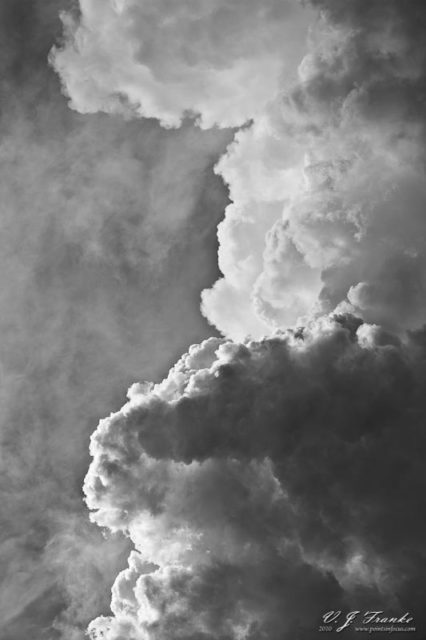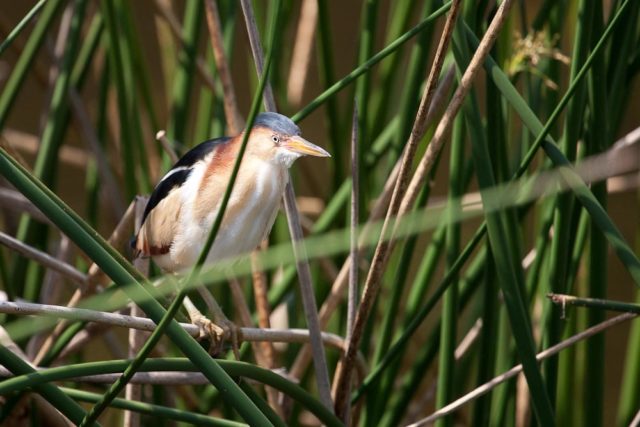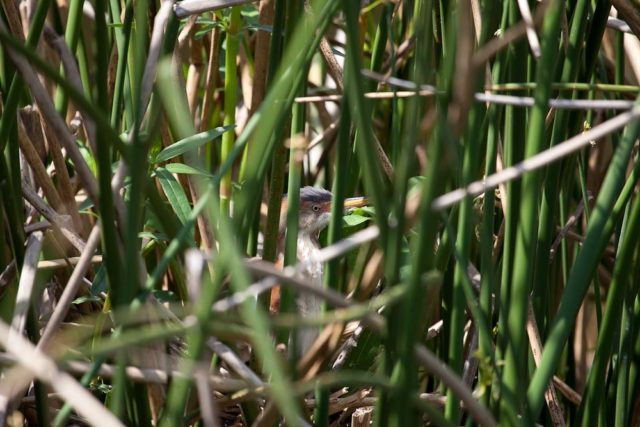

Sometimes the reality that nature isn’t inherently nice, hits you in the face and you realize how much harder the rest of the life on this planet has it. A little more that 5 weeks ago I started following a nesting pair of Green Herons, this post in all likely hood concludes that story on something of a down note. The nest ended up with 3 eggs, all of which hatched and went along nicely.
Unfortunately, I hadn’t had an opportunity to get back and check the nest out since last Friday–boy do these things grow fast. Today however, there was only 1 chick left, the other two had been killed or died. They certainly were too young to have fledged already. Though the loss of 2 of the 3 chicks is certainly within the 30% first-year survival rate of most heron species.
On top of that I got conflicting reports from people regarding whether the last chick had been abandoned or whether the adults were still rearing it. On one hand there was at least one person who claimed it was still being reared. On the other hand, in the little more than an hour I was at the nest, neither adult returned and the juvenile would try to get to a neighboring nest any time it saw another green heron approach. While I’d like to hold out some hope that the adults are still rearing it, given the number of Green Heron nests in the vicinity and that nobody I spoke to had actually seen it being fed as opposed to just having seen an adult in the area, I’m not sure how likely that is.
Fortunately life goes on, and the majority of these birds will be back next year for another season. Regardless of the success of the nest, photographing this was something I can rate as fairly successful.
Was back again yesterday to check on the progress of the 3 Green Heron chicks. They’re now about 10 days old now and already about twice the size they were a week ago. Sibley’s guide to bird life and behavior suggests they’ll fledge between 28 and 42 days from hatching.
Be sure to check out the rest of this series to see these chicks from eggs.
Canon rumors recently posed the question asking what lenses their readers would like to see, unfortunately their poll only lets you pick one lens and I just can’t seem to decide.
A 100-400 IS II is something I certainly could get behind. By sheer numbers of frames it’s my most used lens. It’s also the only lens I’ve had break on me–as opposed to broken by my own action (or stupidity as it may be). A new weather sealed 100-400 with a better IS system and improved image quality would be a real treat. I’ll keep the push pull design and a the relatively compact size thanks the 4.5-5.6 aperture, thanks.
A 14-24 f/2.8 is also an intriguing concept. My 10-22 is arguably my favorite, though not necessarily my most used, lens to shoot with when I’m not using the 100-400. Unfortunately on my preferred body, the EOS 1D, even the 16-35 ranks as a second rate ultra wide thanks the 1D’s idiotic 1.3 crop factor. A 14-24 would certainly help a little, but even then the angle of view is still not as wide as the lowly 10-22 on a APS-C body. Sigh! Not like it would be as good as Nikon’s 14-24 anyway.
Either way, what I’d really like to see isn’t a lens so much as a product road map. I think Pentax did this at one point recently and it’s a very standard thing in software development.
What it comes down to is this; my budget for glass and gear is limited (both in money and space), as such I plan my purchases based on projected needs. I tend to have a good idea what focal lengths and speeds I’m need coverage at, I spend a lot of time looking at the reviews and tests, and make a decision based on what I project I’ll need in the future. That’s not to say that the projections can be wrong, however, every unanticipated release throws a money wrench into that plan.
Unfortunately, a road map is more of a dream than a cheap 1Ds Mark 4 is.
This is the 3rd update in a series of photo journals looking at the development of a Green heron nest and the rearing of the young. The pair ultimately laid 3 eggs, as seen last time. Incubation time was on the order of 22-23 days. The chicks hatched within the 48 hours preceding Friday April 30, 2010.
I had the opportunity to photograph the only flying B-25H Mitchell medium bomber while it was in town over the weekend. While not quite as impressive in terms of size and noise as the B-17 I photographed last year, it was no less an awesome experience.
The Barbie III is operated by History Flight and tours the US offering people a chance to experience flying in this historic aircraft.
A trio of juvenile Great Blue Herons await feeding.
Great Blue Heron chicks fight tug-of-war style over a fish at feeding time.
This has turned into something less of an ideal weak for me to get out material. I’m currently working on a series that takes a look at watermarking or otherwise protecting your digital images and how effective it is. Along with some thoughts into the usability problems each of the methods creates.
In the mean time, I’ve been out shooting now that I have my gear back and in working order so until I get my article done, here are some of the better bird shots from this week. Also I won’t be checking in on the Green Heron that I’ve been following until it gets a little closer to hatching time.
Today’s weather was miserable, rain on top of rain. If it could rain elephants and whales that’s what it was doing. When the weather broke for a bit though I ran up to check on the Green Heron nest. Not only did it seem to survive the weather the nest now has the 3 eggs typical of a Green Heron clutch.

